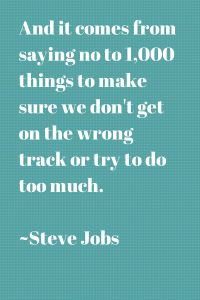As a lifelong music fan, I believe there are many lessons entrepreneurs can learn from rock stars. It’s easy to look at famous musicians like Justin Timberlake or Beyonce and think they became successful overnight.
The business world is no different. Scroll through social media and you’ll entrepreneurs posting about a successful product launch, high-profile media coverage or a record month in sales.
Meanwhile, you put in the hard work daily, but wonder what you’re doing wrong and why your don’t get the same visibility in your business.
Here’s the good news: it takes time to “make it” to the big time – in business or in music.
Before he achieved worldwide success, Justin Timberlake lost on Star Search. So did Beyonce.
They didn’t let those small defeats keep them from their rock star dreams. Here are a few actions you can take to get rock star visibility:
1. Play small venues – When starting a business you have to play the tiny clubs before you can sell out Madison Square Garden. Many entrepreneurs have dreams of delivering a TED talk. Speaking at smaller events or at local networking meetings is a great training ground to hone your message and perfect your presentation.
2. Build the buzz – Can you remember a time when a friend said “you’ve got to hear this song” or introduced you to a new band? Word of mouth referrals are one of the best sources to build buzz for you business. Take a cue from rock stars by engaging your “fans” on social media or ask former clients to write testimonials about your work.
3. Push through the fear – Barbra Streisand’s stage fright kept her from performing in public for decades. Adele, Eddie Vedder and Bob Dylan also shy away from the spotlight. However, these artists haven’t let fear prevent them from sharing their work with the world. Just imagine if Bob Dylan never released “Blowin’ in the Wind” or Adele kept “Someone Like You” in her journal?
Those songs are powerful and so is your message. There is a fan (or customer) who needs your services and is anxiously awaiting your next blog post, video, email or event.
So, put yourself out there.
GO FOR IT!
Share your words and message. You never know, you could be the next overnight success.
If you want to get more visibility for your business, schedule a 30-minute complimentary strategy session.
 Speaking is one of the fastest ways to reach your audience in large numbers and grow your business. If you are new to public speaking or just looking to ramp up how often you speak, it can be tempting to say yes to every offer that comes your way.
Speaking is one of the fastest ways to reach your audience in large numbers and grow your business. If you are new to public speaking or just looking to ramp up how often you speak, it can be tempting to say yes to every offer that comes your way.